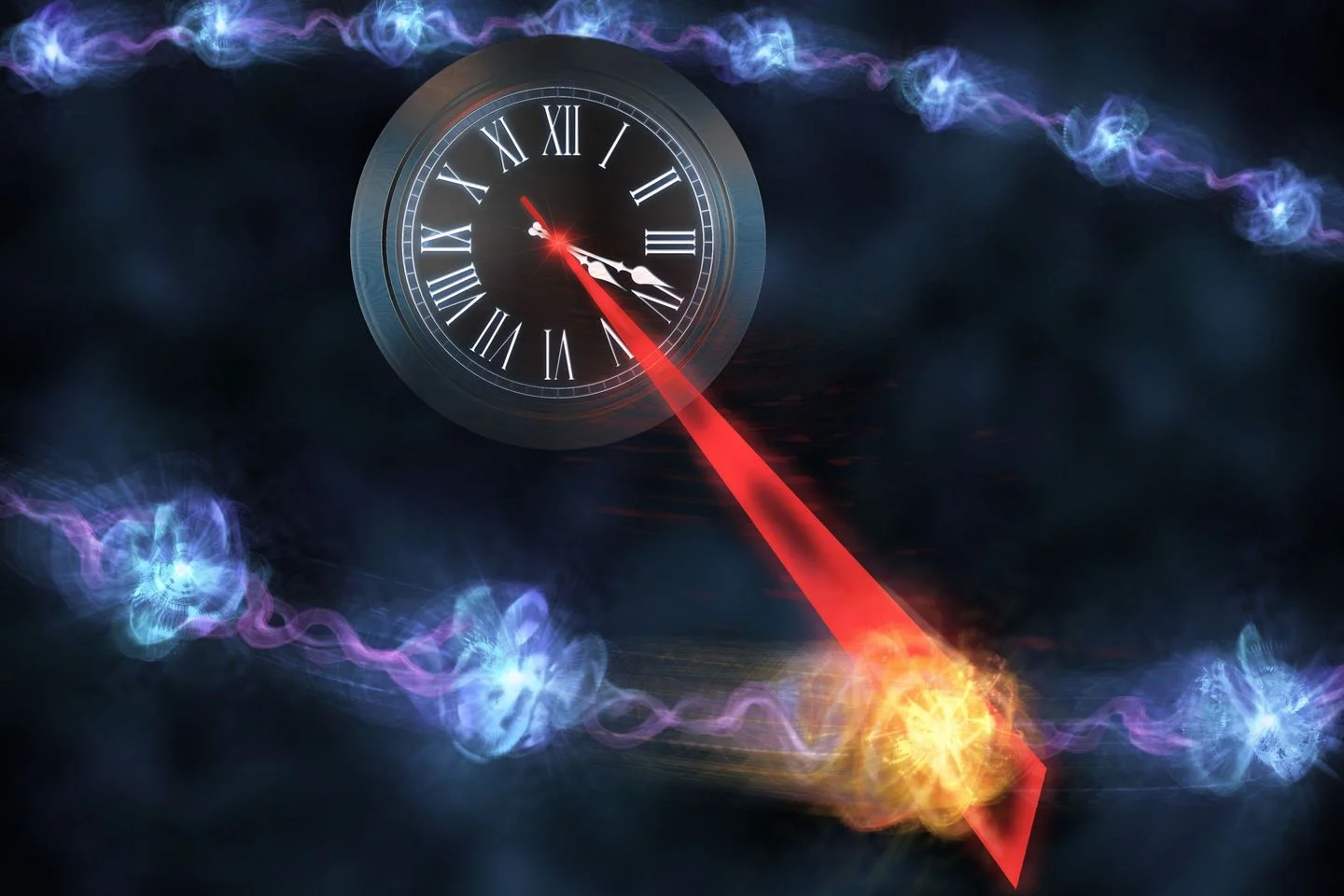Quantum effects are now commonly used to achieve exceptionally precise measurements, but just how accurate can they get? According to new research from TU Wien and collaborators, published in Nature Physics, the limits are even better than previously expected.
 How does a quantum clock work?. Image Credit: Alexander Rommel & TU Wien
How does a quantum clock work?. Image Credit: Alexander Rommel & TU Wien
How can incredibly precise measurements be made using the peculiar characteristics of quantum particles? This question is at the core of the study of quantum metrology. The atomic clock is one example, which measures time far more precisely than would be achievable with traditional clocks by utilizing the quantum properties of atoms.
Nonetheless, a certain amount of uncertainty is always present in the fundamental rules of quantum physics. It is necessary to tolerate some degree of randomness or statistical noise. As a result, the precision that may be attained has basic limitations. Up until recently, the idea that a clock that is twice as accurate needs at least twice as much energy was thought to be an unchangeable law.
However, a group of researchers from the University of Malta, Chalmers University of Technology in Sweden, and TU Wien have recently shown that unique techniques can be applied to greatly improve accuracy. The key idea is to use two distinct time scales, much like a clock has a minute and a second hand.
What Exactly is a Clock?
We have analyzed in principle, which clocks could be theoretically possible. Every clock needs two components: first, a time base generator – such as a pendulum in a pendulum clock, or even a quantum oscillation. And second, a counter – any element that counts how many time units defined by the time base generator have already passed.
Marcus Huber, Professor, Atomic Institute, TU Wien
It is always possible for the time base generator to revert to its initial condition. In a pendulum clock, the pendulum returns to its initial position after a single full oscillation. In an atomic clock, the cesium atom returns to its initial state after a certain number of oscillations. On the other hand, the clock is worthless until the counter is changed.
This means that every clock must be connected to an irreversible process. In the language of thermodynamics, this means that every clock increases the entropy in the universe; otherwise, it is not a clock.
Florian Meier, TU Wien
Every laser beam that reads the state of an atomic clock produces heat, radiation, and entropy. Similarly, the pendulum of a pendulum clock creates some heat and disorder among the surrounding air molecules.
“We can now consider how much entropy a hypothetical clock with extremely high precision would have to generate – and, accordingly, how much energy such a clock would need. Until now, there seemed to be a linear relationship: if you want a thousand times the precision, you have to generate at least a thousand times as much entropy and expend a thousand times as much energy,” added Marcus Huber.
Quantum Time and Classical Time
TU Wien's study team, the Austrian Academy of Sciences (ÖAW) in Vienna, and teams from Chalmers University of Technology, Sweden, and the University of Malta have now demonstrated that this apparent norm can be broken by employing two distinct time scales.
“For example, you can use particles that move from one area to another to measure time, similar to how grains of sand indicate the time by falling from the top of the glass to the bottom,” added Florian Meier.
Similar to how one clock hand counts the number of laps the other clock hand has previously done, it is conceivable to link an entire series of these time-measuring devices in series and determine how many of them have already gone through.
“This way, you can increase accuracy, but not without investing more energy. Because every time one clock hand completes a full rotation and the other clock hand is measured at a new location – you could also say every time the environment around it notices that this hand has moved to a new location – the entropy increases. This counting process is irreversible,” said Marcus Huber
However, quantum physics allows for another type of particle transport: particles can flow across the structure, such as over the full clock dial, without being measured anywhere. In a way, the particle is everywhere at once during this process; it has no clearly defined position until it ultimately arrives, at which point it is measured in an irreversible process that increases entropy.
Like Second and Minute Clock Hands
So we have a fast process that does not cause entropy – quantum transport – and a slow one, namely the arrival of the particle at the very end. The crucial thing about our method is that one hand behaves purely in terms of quantum physics, and only the other, slower hand actually has an entropy-generating effect.
Yuri Minoguchi, TU Wien
The team has now demonstrated that this method results in an exponential improvement in accuracy per rise in entropy. This suggests that far better precision is feasible than earlier models predicted.
“What's more, the theory could be tested in the real world using superconducting circuits, one of the most advanced quantum technologies currently available,” said Simone Gasparinetti, Study Co-Author and Leader of the Experimental Team at Chalmers.
“This is an important result for research into high-precision quantum measurements and suppression of unwanted fluctuations, “and at the same time it helps us to better understand one of the great unsolved mysteries of physics: the connection between quantum physics and thermodynamics,” concluded Marcus Huber.
Journal Reference:
Meier, F., et al. (2025) Precision is not limited by the second law of thermodynamics. Nature Physics. doi.org/10.1038/s41567-025-02929-2